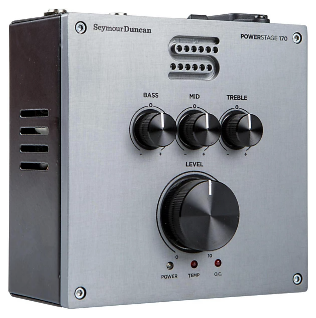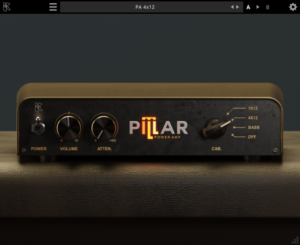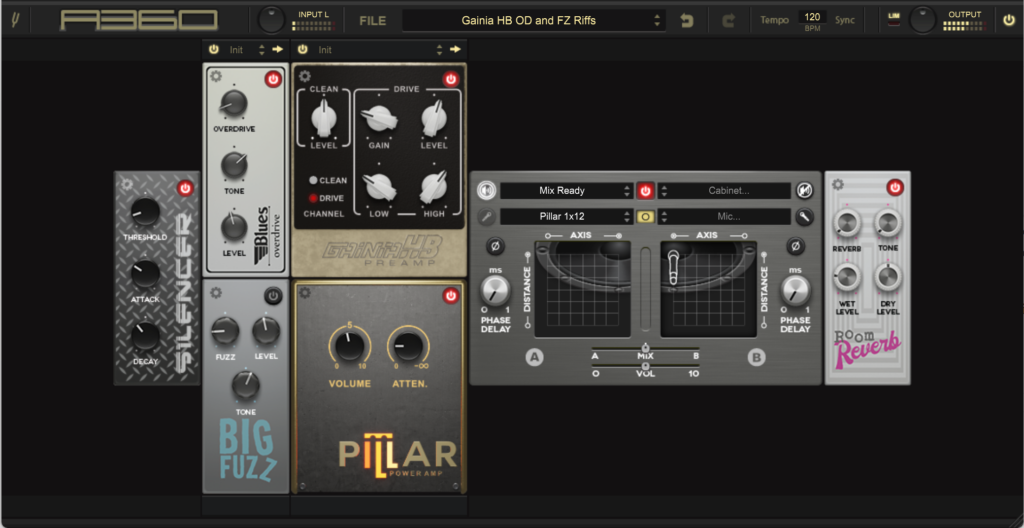
Discover the versatility and portability of power amps for your guitar rig, available in various form factors, from desktop units to pedal effects. In this comprehensive guide, we will explore what power amps are, how they work, and where they fit into your signal chain. Additionally, we’ll discuss the benefits of using power amps and provide insights into some of the best options available, both in hardware and software formats.
Introduction: The Versatility and Portability of Power Amp
Power amps provide guitarists with flexibility, versatility, and portability in their guitar rigs. Whether you’re a beginner or a seasoned pro, these device can enhance your sound and offer a range of tones, from clean and pristine to heavy and distorted. In this comprehensive guide, we will delve into the world of power amp device, discussing their functionality, placement in your signal chain, and reviewing top hardware and software options available. Join us on this journey to find the perfect power amps that suits your needs.
What Are Power Amp device?
Power amps, available in various form factors such as desktop units and pedal effects, are amplifiers designed to amplify the guitar signal and transmit it to a speaker cabinet. These amps come in different sizes, wattages, and formats, including compact units suitable for desktop use or integration with pedalboards. Power amps serve as a popular choice for guitarists seeking to shape their unique sound or those looking for lightweight

Pedalboard Power Amp. source: guitarcenter.com
alternatives to traditional amplifiers when

Desktop Power Amp. source: Guitarcenter.com
performing through PA systems. They take the guitar signal from a preamp device or other sources and amplify it to a level suitable for driving a speaker cabinet. Power amps often feature controls for gain, output level, and speaker emulation, allowing for customization of the amplifier’s sound. With their portability, versatility, and affordability, power amps make an excellent addition to any guitar rig.
Power Amp device as a Backup Rig
Having a backup guitar is always a wise choice to mitigate risks, but it’s equally important to have a backup solution for your amplifier. Power amps can serve as a reliable backup in case your main amp malfunctions during a performance. These compact amplifiers act as a lifeline, ensuring you can continue playing without interruption.
Furthermore, power amps have evolved to offer advanced features and can even serve as the foundation for an entire rig. When your main amp goes down on stage, a power amp can seamlessly take its place. By setting the power amp to match the volume of your live amplifier, you can maintain consistency in your performance. It is a well-known adage among musicians that if something is bound to go wrong, it often happens on stage. Catastrophic situations can arise, such as a dead tubes, a melted transformer, or other technical issues, leaving a guitarist without a signal. In such instances, a power amp, whether in pedal or desktop format, can act as a temporary replacement for your amplifier. Most professional guitarists on tour have contingency plans in place, and aspiring professionals should adopt a similar mindset to ensure a seamless performance.
How Do Power Amp device Work?
To comprehend the inner workings of power amp device, let’s explore a simplified explanation of their functionality:
- The guitar signal enters the power amp pedal.
- The power amp within the pedal amplifies the incoming signal.
- The amplified signal is then transmitted to a speaker cabinet.
- The speaker cabinet converts the amplified signal into audible sound waves.
Where Do Power Amp device Go in Your Signal Chain?
To ensure optimal performance, power amp device should always be positioned at the end of your signal chain. This placement allows them to receive the amplified signal from the preamp pedal, other effects, enabling them to function correctly. Here’s a general rule of thumb to follow when arranging your signal chain:
- Preamp device should be placed before power amp device.
- Modulation pedals should come after preamp pedals but before power amp pedals.
- Time-based effects pedals (such as delay and reverb) should follow modulation pedals but precede power amp pedals.
What Are Some of the Best Power Amp Devices on the Market?
Choosing the right power amp Device involves considering crucial factors. Let’s explore these factors and review some top options:
- Form Factor: Power amps come in different sizes and formats, including desktop units and pedal effects. Consider your setup and portability requirements when selecting a power amp.
- Tube vs. Solid-State: Power amp device can be tube-based or solid-state. Tube power amps are often preferred for superior sound quality, althou
-

Kuassa’s Free Pillar Power Amp
gh they tend to be more expensive and heavier. Solid-state power amps, on the other hand, offer affordability and lighter weight but are considered to be slightly inferior in sound quality.
- Wattage: Power amp Devices are available in various wattages, determining their maximum volume output. For smaller venues or home use, a lower wattage power amp Device should suffice, while larger venues demand higher wattage options.
- Software Power Amps: Software power amps present an alternative for guitarists seeking space-saving solutions or the ability to experiment with different amp sounds. These virtual power amp options can be utilized with software recording and amp modeling programs, providing a cost-effective and versatile alternative to hardware power amps.
Considering your needs and budget, you can make an informed decision. For versatile and powerful hardware power amp Devices, options like the Orange Pedal Baby 100, Milkman The Amp 100, Seymour Duncan Powerstage 170, and Blackstar Amped 1 stand out. For a more affordable choice, Kuassa’s Pillar software power amp provides remarkable value.
Are Power Amp Device Essential?
Power amps are a highly individualistic accessory and may not be necessary for every guitarist. However, they offer a convenient solution for those already using preamp Devices and satisfied with their tone. By incorporating a power amp Device, one can replace the need for a full set of guitar amps. In today’s digital age, professionals are increasingly relying on software to achieve these effects. With advancements in technology, everything, including amplifiers, can be simulated digitally through computers or multi-effects processors like the Kuassa Amplifikations, Efektors, or Amplifikation 360.
The Amplifikation 360 software allows for the creation of custom effects “scenes” that can be controlled using a MIDI foot controllers, or automated during live performances, eliminating the need to manually adjust pedals with your foot and ensuring precise timing.

Pillar Power Amp routing in Amplifikation 360
Exploring Software Power Amps
Apart from hardware power amp devices, there is a wide range of software power amps available. These software alternatives can be used in conjunction with various software recording and amp modeling programs, expanding your tonal possibilities. One prominent software power amp in the market is Kuassa’s Pillar Power Amp. Pillar offers exceptional quality and versatility while being compatible with numerous DAWs and amp modeling programs. Here are some of its key features and capabilities:
- Power Amp Simulation: Pillar Power Amp accurately simulates the behavior and characteristics of real power amps, allowing you to achieve authentic and dynamic amp tones directly within your DAW or amp modeling software.
- Volume amplification: Pillar’s primary function is to amplify the volume of the guitar sound, allowing for increased volume and presence in your tone.
- Built-in cab-simulator: Pillar includes a built-in cab-simulator, offering realistic speaker cabinet responses. This feature eliminates the need for external cabinet simulation plugins.
- Custom impulse response (IR) loading: Users have the flexibility to load custom impulse response files, enabling them to use their preferred speaker cabinet simulations and tailor their tone to their specific preferences.
- Striking visual design: Pillar boasts a visually captivating interface, combining modern aesthetics with an intuitive layout for an enjoyable user experience.
- Compatibility: Kuassa Pillar Power Amp is compatible with various digital audio workstations (DAWs) and Amplifikation 360, a powerful software suite that combines guitar amplifier and effects simulations, offering guitarists endless possibilities for crafting their desired tones.
- Cost-effective Solution: Pillar Power Amp offers a cost-effective alternative to hardware power amps. It allows you to explore different amp sounds and experiment with your guitar tone without the need for expensive physical equipment.
By utilizing Kuassa Pillar Power Amp, you can access a powerful and multifaceted software power amp solution that delivers authentic tones and exceptional sound quality, making it a valuable tool for guitarists in their creative process and performances.


